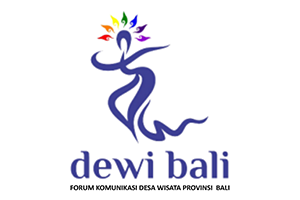Gastronomic Motivation and Place Attachment through the Mediating Role of Gastronomic Experience: Evidence from Bandung, Indonesia
DOI:
https://doi.org/10.24922/eot.v12i2.2193Keywords:
gastronomic motivations, gastronomic experience, place attachment, structural equation modeling (SEM)Abstract
Gastronomy plays a central role in shaping tourists’ travel decisions, as authentic culinary experiences connect visitors with local culture and strengthen their attachment to destinations. This study examined the effect of gastronomic motivations on place attachment, with gastronomic experience as a mediating variable. A quantitative approach using Structural Equation Modeling (SEM) with AMOS 24 was employed to rigorously test the proposed relationships. Data were obtained from 400 valid questionnaires completed by tourists who had visited Bandung and tasted local cuisine within the past year. The sample size was determined using the Lemeshow formula, as the population size was unknown. The analysis involved confirmatory factor analysis (CFA) to assess construct validity and measurement reliability, followed by structural model testing. The results demonstrated that gastronomic motivations had a significant positive effect on both gastronomic experience and place attachment. Furthermore, gastronomic experience was found to significantly enhance place attachment, confirming its mediating role. These findings highlight the importance of gastronomy as both a motivational and experiential driver of tourists’ emotional bonds with destinations. From a managerial perspective, the study provides practical and strategic insights for destination managers and tourism stakeholders in developing marketing strategies and innovative tourism products that emphasize local culinary identity and community-based gastronomic experiences. Limitations include the single-destination focus, cross-sectional and self-reported data, and limited generalizability. Future research should adopt longitudinal designs or comparative studies across multiple destinations.
References
Abdillah, F., Ayuningsih, S. F., Basalamah, A., & Rachmat, T. A. (2025). Inventory of Gastro-Tourism Ecosystem Concept in Ciletuh Geopark, Indonesia. E-Journal of Tourism. https://doi.org/10.24922/eot.v12i1.125583
Agyeiwaah, E., Otoo, F. E., Suntikul, W., & Huang, W.-J. (2019). Understanding culinary tourist motivation, experience, satisfaction, and loyalty using a structural approach. Journal of Travel & Tourism Marketing, 36(3), 295–313. https://doi.org/10.1080/10548408.2018.1541775
Andari, R., & Ismarizal, B. (2023). Conservation of Traditional Games as Wisdom Value Local and Educational Tourism Attraction. E-Journal of Tourism. https://doi.org/10.24922/eot.v10i1.101458
Bentler, P. M., & Raykov, T. (1998). On Measures of Explained Variance in Nonlinear Strctural Equations Models.
Berbel-Pineda, J. M., Florencio, B. P., Palacios-Florencio, B., Ramírez-Hurtado, J. M., & Santos-Roldán, L. (2019). Gastronomic experience as a factor of motivation in the tourist movements. International Journal of Gastronomy and Food Science, 18, 100171. https://doi.org/10.1016/j.ijgfs.2019.100171
Bezzola, T., & Lugosi, P. (2018). Negotiating place through food and drink: Experiencing home and away: Tourist Studies, 18(4), 486–506. https://doi.org/10.1177/1468797618791125
Byrne, B. M. (2013). Structural Equation Modeling With Lisrel, Prelis, And Simplis: Basic Concepts, Applications, And Programming (Multivariate Applications Series) By Barbara M. Byrne. https://doi.org/10.4324/9780203774762
Cordova-Buiza, F., Gabriel-Campos, E., Castaño-Prieto, L., & García-García, L. (2021). The Gastronomic Experience: Motivation and Satisfaction of the Gastronomic Tourist—The Case of Puno City (Peru). Sustainability, 13(16), 9170. https://doi.org/10.3390/su13169170
Crompton, J. L. (1979). Motivations for pleasure vacation. Annals of Tourism Research, 6(4), 408–424. https://doi.org/10.1016/0160-7383(79)90004-5
Cuadra, S. M., Martín, J. C., Román, C., & Guzmán, T. L. (2023). Influence of gastronomic motivations, satisfaction and experiences on loyalty towards a destination. British Food Journal, 125(10), 3766–3783. https://doi.org/10.1108/bfj-02-2023-0121
Dann, G. M. S. (1977). Anomie, ego-enhancement and tourism. Annals of Tourism Research, 4(4), 184–194. https://doi.org/10.1016/0160-7383(77)90037-8
Deborah Christine Widjaja, Widjaja, D. C., Regina Jokom, Jokom, R., Monika Kristanti, Kristanti, M., Serli Wijaya, & Wijaya, S. (2020). Tourist behavioural intentions towards gastronomy destination: Evidence from international tourists in Indonesia. Anatolia : An International Journal of Tourism and Hospitality Research, 31(3), 376–392. https://doi.org/10.1080/13032917.2020.1732433
Dwyer, L., Chen, N. C., & Lee, J. (2019). The role of place attachment in tourism research. Journal of Travel & Tourism Marketing, 36(5), 645–652. https://doi.org/10.1080/10548408.2019.1612824
González, J., De Boeck, P., & Tuerlinckx, F. (2008). A double-structure structural equation model for three-mode data. Psychological Methods, 13(4), 337–353. https://doi.org/10.1037/a0013269
Hsu, F.-C., & Scott, N. (2020). Food experience, place attachment, destination image and the role of food-related personality traits. Journal of Hospitality and Tourism Management, 44, 79–87. https://doi.org/10.1016/j.jhtm.2020.05.010
Ismarizal, B., & Kusumah, A. H. G. (2023). The Instagram Effect on Tourist Destination Choices: Unveiling Key Attraction Elements. Journal of Consumer Sciences. https://doi.org/10.29244/jcs.8.2.124-137
Ismarizal, B., Malihah, E., & Andari, R. (2023). Tourism Potential Analysis through Community-Based Tourism Approach: Talang Mamak and Melayu Tua Tribe Communities in Rantau Langsat Village. Media Komunikasi Geografi. https://doi.org/10.23887/mkg.v24i1.59106
Kim, Y. G., Eves, A., & Scarles, C. (2013). Empirical verification of a conceptual model of local food consumption at a tourist destination. International Journal of Hospitality Management, 33, 484–489. https://doi.org/10.1016/j.ijhm.2012.06.005
López-Guzmán, T., Lotero, C. P. U., Gálvez, J. C. P., & Rivera, I. R. (2017). Gastronomic festivals: Attitude, motivation and satisfaction of the tourist. British Food Journal, 119(2), 267–283. https://doi.org/10.1108/bfj-06-2016-0246
Low, S. M., & Altman, I. (1992). Place attachment: A conceptual inquiry. 1–12. https://doi.org/10.1007/978-1-4684-8753-4_1
Mgonja, J. T., Backman, K. F., Backman, S. J., Moore, D., & Hallo, J. C. (2017). A structural model to assess international visitors’ perceptions about local foods in Tanzania. Journal of Sustainable Tourism, 25(6), 796–816. https://doi.org/10.1080/09669582.2016.1250768
Mora, D., Solano-Sánchez, M. Á., López-Guzmán, T., & Moral-Cuadra, S. (2021). Gastronomic experiences as a key element in the development of a tourist destination. International Journal of Gastronomy and Food Science, 25, 100405. https://doi.org/10.1016/j.ijgfs.2021.100405
Patnaik, B., & Sree, K. (2015). Interrelations of service quality and service loyalty dimensions in medical tourism. Benchmarking: An International Journal, 22(1), 18–55. https://doi.org/10.1108/bij-04-2013-0036
Pesonen, J., Komppula, R., Kronenberg, C., & Peters, M. (2011). Understanding the relationship between push and pull motivations in rural tourism. Tourism Review, 66(3), 32–49. https://doi.org/10.1108/16605371111175311
Ram, Y., Björk, P., & Weidenfeld, A. (2016). Authenticity and place attachment of major visitor attractions. Tourism Management, 52, 110–122. https://doi.org/10.1016/j.tourman.2015.06.010
Sims, R. (2009). Food, place and authenticity: Local food and the sustainable tourism experience. Journal of Sustainable Tourism, 17(3), 321–336. https://doi.org/10.1080/09669580802359293
Spearman, C. (1904). General intelligence Objectively Determined and Measured. American Journal of Psychology, 15(2), 201–293. https://doi.org/10.2307/1412107
Suntikul, W., Agyeiwaah, E., Huang, W.-J., & Pratt, S. (2020). Investigating the tourism experience of Thai cooking classes: An application of Larsen’s three-stage model. Tourism Analysis, 25(1), 107–122. https://doi.org/10.3727/108354220x15758301241684
Tsai, C.-T. S. (2016). Memorable Tourist Experiences and Place Attachment When Consuming Local Food. International Journal of Tourism Research, 18(6), 536–548. https://doi.org/10.1002/jtr.2070
Valverde-Roda, J., Medina-Viruel, M. J., & Solano-Sánchez, M. Á. (2022). Interests, motivations and gastronomic experiences in the world heritage site destination of Granada (Spain): Satisfaction analysis. British Food Journal. https://doi.org/10.1108/bfj-07-2021-0830




















